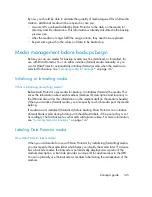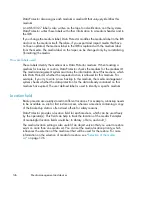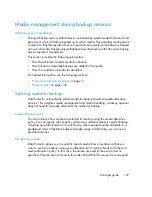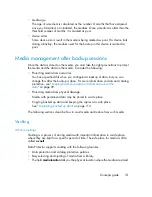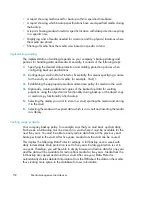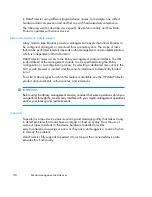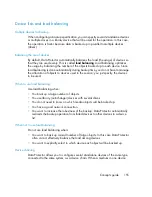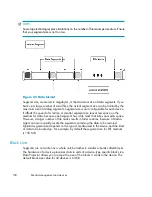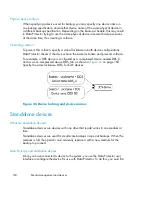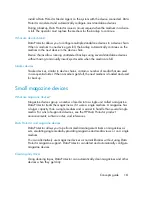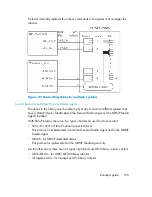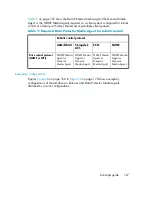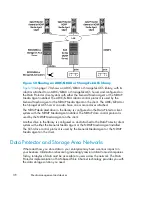
Device lists and load balancing
Multiple devices for backup
When configuring a backup specification, you can specify several standalone devices
or multiple drives in a library device that will be used for the operation. In this case,
the operation is faster because data is backed up in parallel to multiple devices
(drives).
Balancing the use of devices
By default, Data Protector automatically balances the load (the usage) of devices so
that they are used evenly. This is called
load balancing
. Load balancing optimizes
the usage by balancing the number of the objects backed up to each device. Since
load balancing is done automatically during backup time, you do not have to manage
the allocation of objects to devices used in the session; you just specify the devices
to be used.
When to use load balancing
Use load balancing when:
•
You back up a large number of objects.
•
You use library (autochanger) devices with several drives.
•
You do not need to know on which media objects will be backed up.
•
You have a good network connection.
•
You want to increase the robustness of the backup. Data Protector automatically
redirects the backup operation from failed devices to other devices in a device
list.
When not to use load balancing
Do not use load balancing when:
•
You want to back up a small number of large objects. In this case Data Protector
often cannot effectively balance the load among devices.
•
You want to explicitly select to which device each object will be backed up.
Device chaining
Data Protector allows you to configure several standalone devices of the same type,
connected to the same system, as a device chain. When a medium in one device
Concepts guide
155
Summary of Contents for B6960-96035
Page 17: ...Overview of backup and automated media copy sessions 340 105 Concepts guide 17 ...
Page 20: ...20 ...
Page 22: ...Publication history 22 ...
Page 132: ...Planning your backup strategy 132 ...
Page 182: ...Media management and devices 182 ...
Page 186: ...Users and user groups 186 ...
Page 204: ...The Data Protector internal database 204 ...
Page 218: ...Figure 62 Direct SIP integration example Service management 218 ...
Page 242: ...Integration with database applications 242 ...
Page 264: ...Synthetic backup 264 ...
Page 274: ...Split mirror concepts 274 ...
Page 288: ...Snapshot concepts 288 ...
Page 344: ...Further information 344 ...
Page 402: ...Glossary 402 ...





